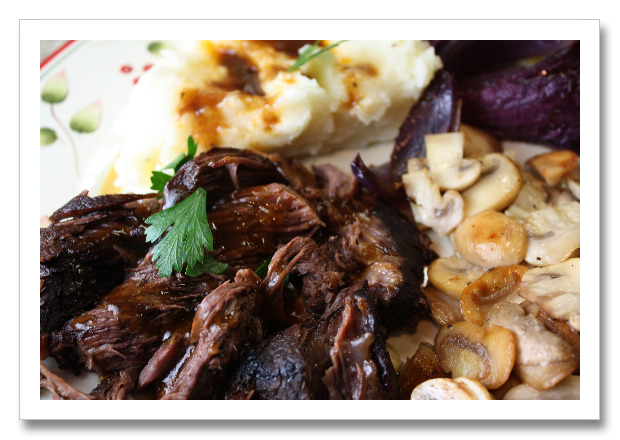
Do you know what a la mode means? It’s French, and originally meant in the current style, or fashion. I believe it may have pertained more to clothing than food. But here, and in French cooking, a la mode does still mean in vogue, in style. Restaurants here in the U.S. use the phrase a la mode to describe a dessert when it’s served with ice cream. Like apple pie a la mode.
This pot roast – well, it’s just that this has been in style for at least a century, and it’s just so infinitely good. Delicious. Succulent. Comfort food. Melt in your mouth scrumptious.
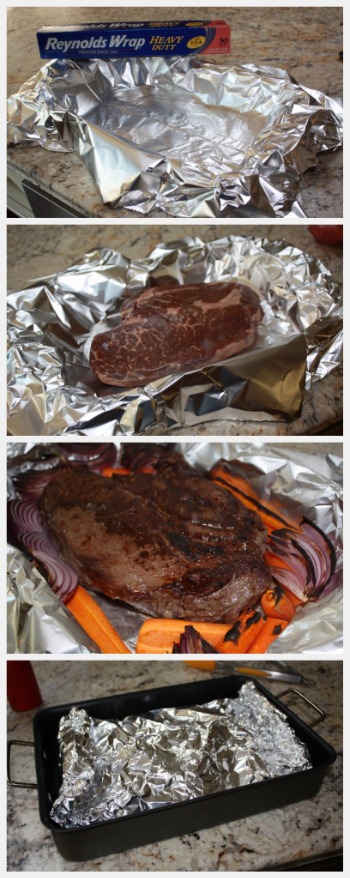 This is a recipe I’ve been using for about 40 years. Gee, that makes me feel ancient. 40 years. It appeared in the San Diego Union Tribune in October of 1973. I have an aging yellowed newspaper clipping that I scotch taped to the page in my ring binder and had written in the date. The short article was written by a food writer named Zolita Vincent. I have adapted it (more wine, seasonings, different side veggies, and I make it with a smaller piece of meat).
This is a recipe I’ve been using for about 40 years. Gee, that makes me feel ancient. 40 years. It appeared in the San Diego Union Tribune in October of 1973. I have an aging yellowed newspaper clipping that I scotch taped to the page in my ring binder and had written in the date. The short article was written by a food writer named Zolita Vincent. I have adapted it (more wine, seasonings, different side veggies, and I make it with a smaller piece of meat).
PICTURED LEFT: (1) that’s the 9×13 pan I started with, lined it with two pieces of heavy-duty foil – I patched two together with a seam in the middle; (2) the chuck roast nestled in the middle; (3) the roast was broiled/browned on one side with the red onions and carrots nestled alongside – they got broiled too – for about 5 minutes; and (4) once browned on both sides and the red wine and other stuff was added, I sealed it up tight as a drum and it went into the oven for 3+ hours.
In the traditional French method (I looked at one of my Julia Child cookbooks for this) the roast is marinated in red wine and herbs for 2-3 days before it’s baked. I didn’t plan that far ahead, and never seem to.
This recipe is a short-cut method of making the plan-ahead recipe. Part of the great flavor comes, though, from the red wine you pour all over the roast. Since it’s baked at a low heat (300°), it just barely simmers, which makes the meat so tender and succulent. The onions, carrots and celery also provide a lot of flavor (you toss those out after the roast is done – they’ve expended all their flavor to the roast and the sauce). So you make other veggies to serve with this, or you can open up the foil packet about 1 1/2 hours before it’s done and add new onions, carrots and some potatoes, if you choose.
Personally, I prefer mashed potatoes with a pot roast any day. And that’s what I did this time. I also quick-sautéed some thinly sliced mushrooms in some olive oil and butter to serve along side. I’d also baked a couple of red onions too, for the last hour (not sealed in foil, though).
Once the roast was done, I poured out all the liquid in that foil packet into a saucepan (leaving the roast inside, and resealed it to keep it warm), and added some thickening. Actually I tried using something new . . . I read about this stuff in the King Arthur Flour catalog – it’s called Signature Secrets Culinary Thickener. Like using flour or cornstarch (which is what my original recipe called for), this new-fangled stuff will dissolve and thicken without mixing with water, doesn’t clump, and will thicken even COLD liquid. Imagine that? I’m a new believer in this stuff. It’s not cheap, but you only use a tablespoon or so at a time. Great product.
Anyway, I thickened the sauce/gravy, added just a bit of water because it was a tad too salty for me, and spooned it over the slices (well, you can hardly slice the meat as it falls apart with the touch of a fork) and over the mashed potatoes. I think you could make the pot roast in a crock pot too, although I’ve not tried adapting this recipe to that method.
Yum is all I can say. And if you’re a regular reader of my blog, and I tell you this one is a keeper, trust me. You can do all the prep work ahead of time (don’t broil/brown the meat, though until you’re ready to roast it).
French Pot Roast a la Mode
Recipe By: Adapted from an ancient newspaper clipping, circa 1970.
Serving Size: 6
NOTES: If you’d prefer to have roasted potatoes too, remove the foil sealed pouch and pan about 1 hour before it’s done and add potatoes to the mixture. Seal back up and continue roasting. I prefer this with mashed potatoes.
3 pounds beef chuck roast — trimmed of exterior fat
2 medium red onions — peeled, wedged
3 whole carrots — peeled, cut in big chunks
1 stalk celery — cut in 2-3 pieces
3 whole garlic cloves — peeled, smashed
2 teaspoons dried thyme — crushed in between your palms
2 whole bay leaves
1 teaspoon salt
2 cups red wine
1 teaspoon beef soup base — or bouillon cubes
1/4 cup brandy
Salt and freshly ground black pepper
1 1/2 tablespoons tomato paste
2 tablespoons cornstarch — or other thickening agent
3 tablespoons Italian parsley — minced
5 large baking potatoes — made into mashed potatoes
2 cups mushrooms — sliced, sauteed in olive oil and butter
1. Preheat oven to broil. Place two layers of heavy-duty foil in a 9×13 roasting pan. Leave long ends (or seal two long pieces together to make one larger piece). Make an interior nest with the foil.
2. Place the chunk of beef in the middle of the foil. Prepare onions, carrots and celery and nestle them around the outside of the meat.
3. Broil the meat on one side, until it’s golden to dark brown, watching so the vegetables don’t burn. Turn roast over, and the vegetables too, and broil the other side until it’s brown. Remove from oven and add all other ingredients to the roast. Seal carefully, rolling ends in to completely seal up the meat. Turn oven temp to 300°.
4. Place meat, in the roasting pan, in oven and bake for about 3 hours.
5. Open the pouch and using a strainer, pour out the juices into a small saucepan. Seal up the meat and veggies and place them back in the oven (turn off the oven).
6. Taste the sauce and check seasoning. Mix the cornstarch with a little bit of water and add to the sauce as it’s heating up over medium heat. Cook until it’s a thin-gravy consistency, then pour into a small pitcher.
7. During the last 30 minutes of baking, separately prepare the potatoes and mushrooms.
7. Discard the vegetables in the packet (they’re tasteless from such a long roasting time). Garnish with Italian parsley and serve.
Per Serving: 734 Calories; 36g Fat (49.1% calories from fat); 41g Protein; 43g Carbohydrate; 5g Dietary Fiber; 131mg Cholesterol; 585mg Sodium.
A year ago: Italian Sausage and Tomato Soup (a real favorite)
Two years ago: Wednesday Breakfast Scones (from a Portland, Oregon bakery)
Three years ago: Heavenly Cream Cheese Brownies






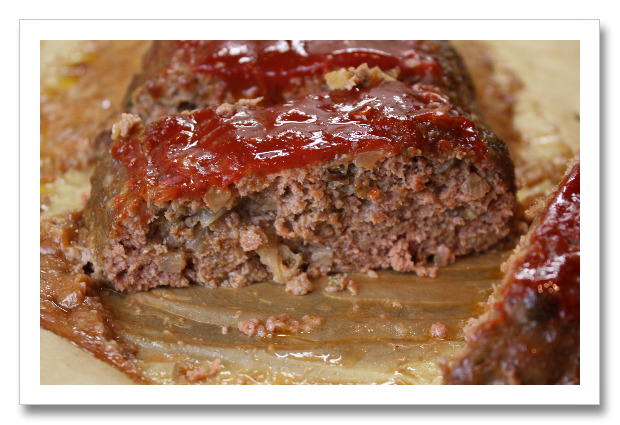
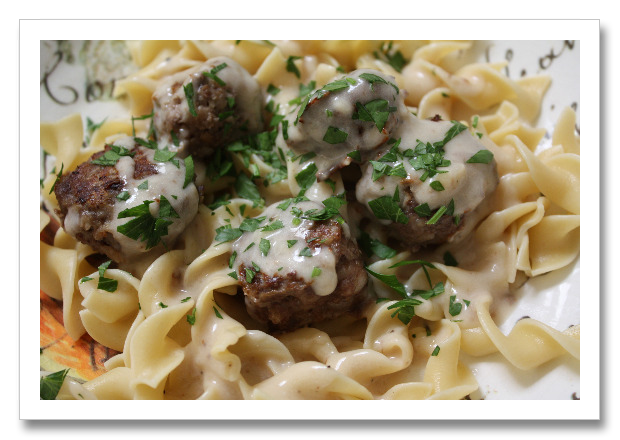

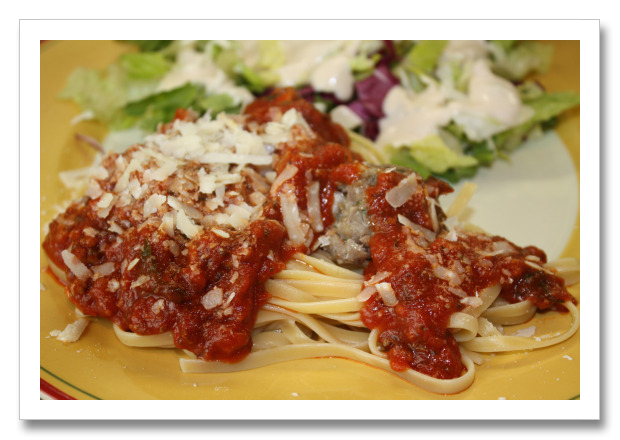
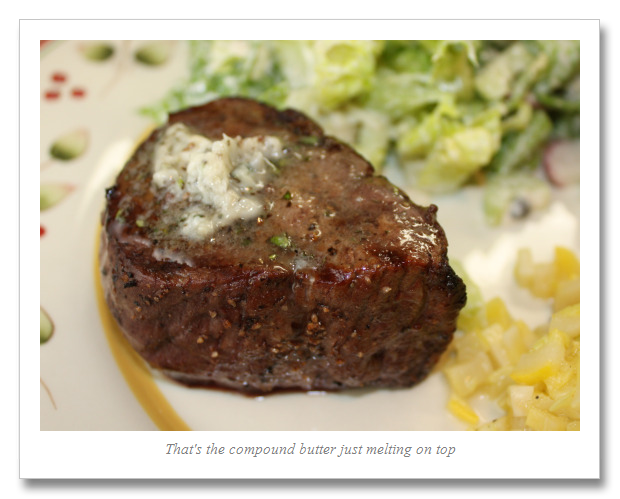
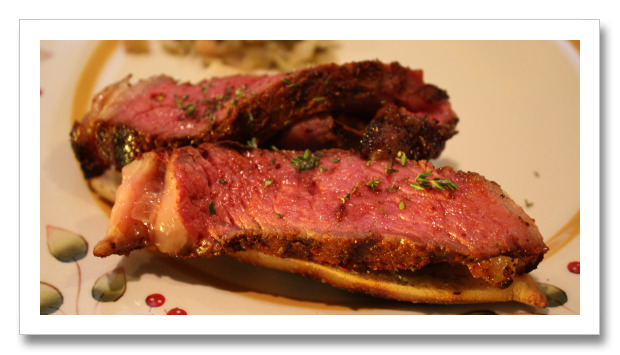
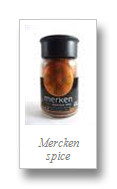
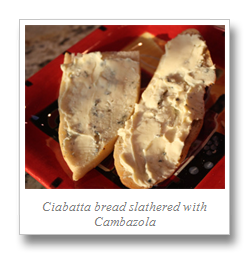
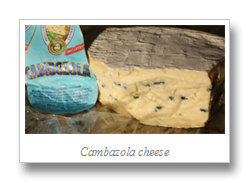
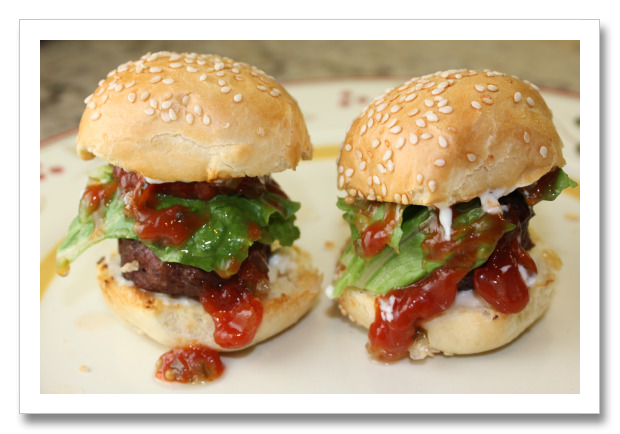
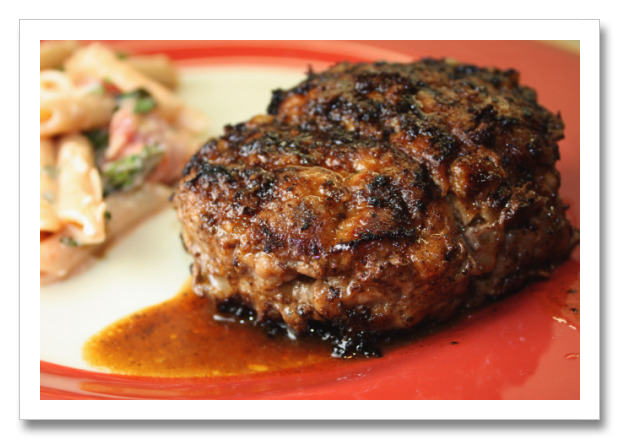
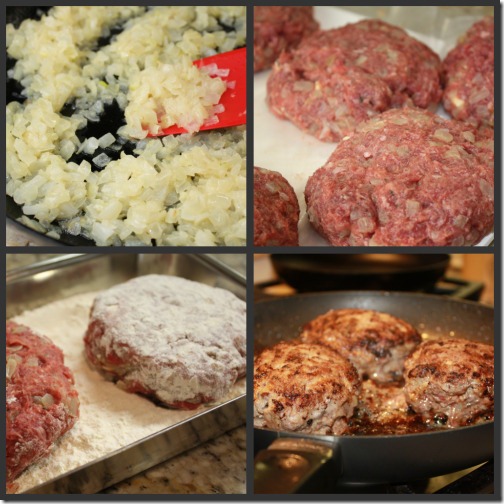
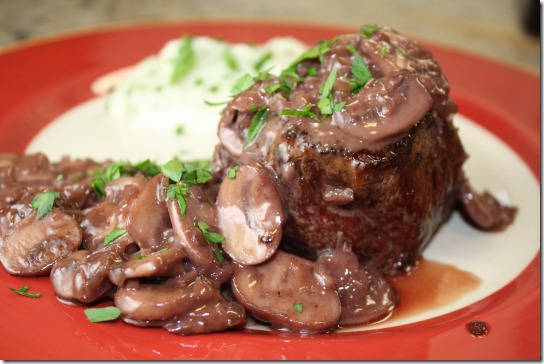
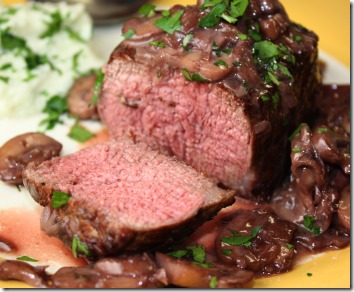
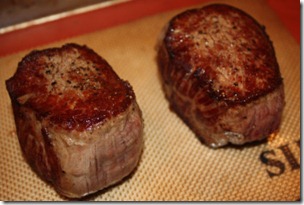
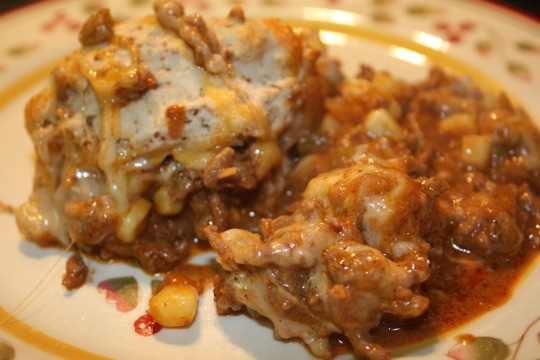
Leave a Comment!